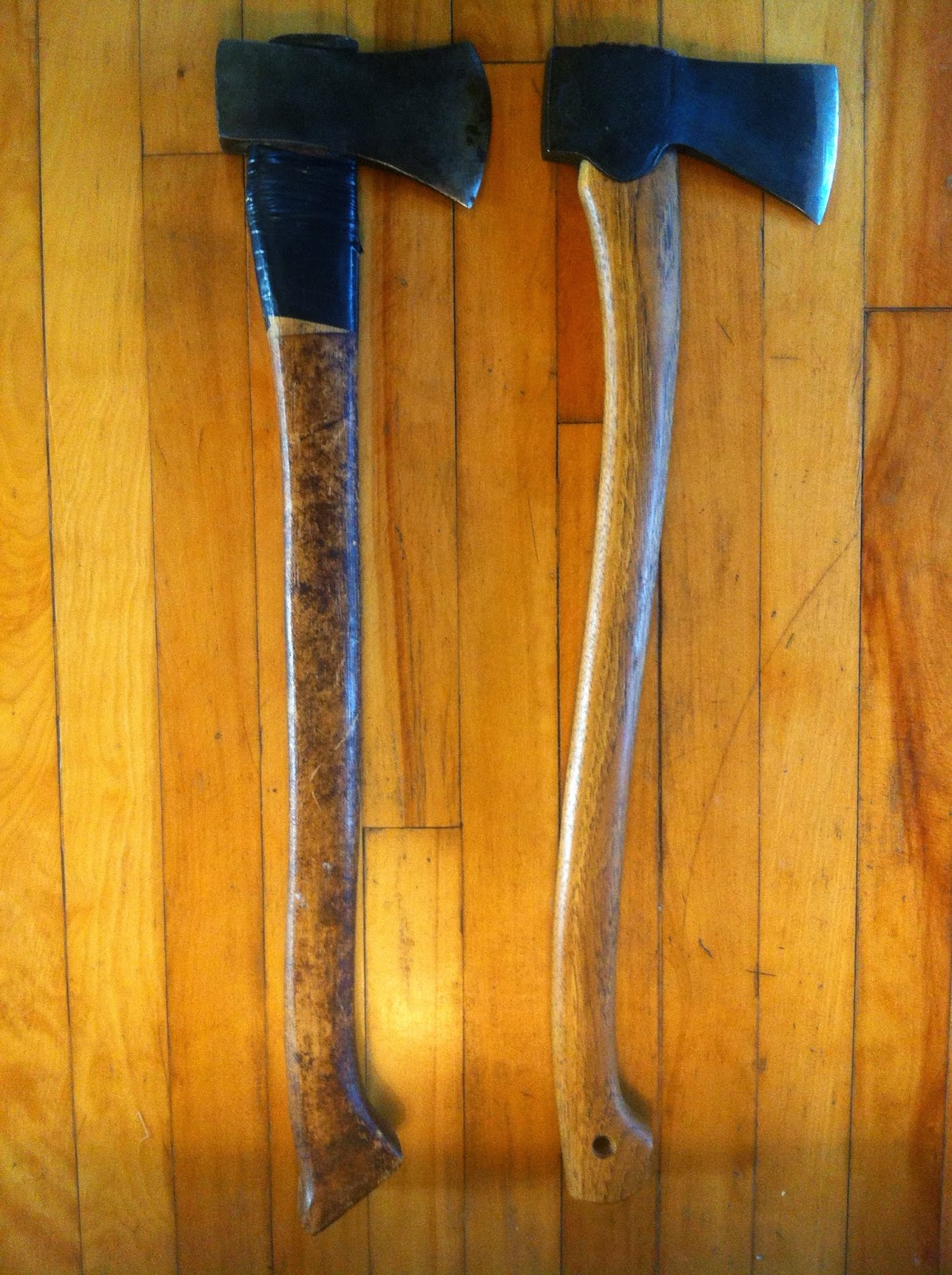Deering Puukko (in progress)
Fit and Finish: 5/5
As a work knife this comes exceptional in its aesthetics. If it were a collector's knife I would have to give it a 4.5/5 for a few inconsistencies, although extremely minor: a few marks of glue, and the lanyard tubes could have been detailed more. Perhaps that is way too picky, but I'm not a collector so I score it as a user and it seems the knife was designed for wood (which is what I like).
Sheath: 5/5
I think this knife has the best quality sheath I have ever seen. Very durable. Fits snug even after lots of use. The dangler has two strong buttons as well as a quick-release so that you can switch quickly between neck-carry and your belt.
Handling: 10/10
A fairly light knife at 154 grams, the size of the handle can be a bit deceiving. It fills the hand without being overbuilt and contours to the hand in all grips. Fits my hand perfectly and can be used for full-time woods living. I used this more than eight hours (on and off with camp chores) some days, with no problems at all. It contours simply while having the advantage of your being able to fall back on the handle or choke-up for carving tasks. Without a guard and intrusive contours you can also make minor adjustments to your grip which allows the knife to be used for longer periods. This is the best handle shape for a knife, in my experience.
Geometry: 10/10
To me, the knife appears as a cross between a puukko, a Mora/Marttiini, and a primitive knife. This gives the benefit of a wider and narrower section of the blade. Also, the gentle upward slope of the edge acts much like continuous curvature while allowing for a much narrower blade than most knives with a curved edge. The blade is about as long as the palm is wide.
Woodcutting Ability: 10/10
Cuts through wood like it's butter. Very clean cuts. Feels natural to stay on line with the edge. Is very near carving ability for a bushcraft knife. The geometry allows it to excel here.
Food Preperation: 8/10
The design of this knife does not allow it to excel at food prep, as is the case with most bushcraft knives. Compared to a chef's knife you have to make a number of adjustments. Yet it slices very well and an experienced cook can still do well with this knife. Compared to other bushcraft blades it would be around 9/10 for cooking tasks. At 3/32" the scandi grind works fine.
Butchering: 4/5
Cuts through meat extremely well, even as a scandi, and although it is a puukko it still works very well on small fish and game. Unfortunately it has not yet been used on larger game, but in my (admittedly limited) experience it would be up to the task, although not on par with a dedicated skinner of course.
Durability: 4.5/5
This largely comes down to choice. At 3/32" thickness the knife is not very durable compared to the bigger blades out there today, but can certainly perform all of the necessary woods living chores as well as potential survival tasks. A blade that should not be pounded on - a knife for thinking through your work, rather than a general tool. Tough enough.
Heat Treat: 10/10
It holds an edge up there with the best knives I've used, seemingly better thus far. I did experience one extremely minor roll while using the knife roughly (my fault), but this is par for the course with a sharpened scandi. And this knife comes insanely sharp, so the roll in my opinion suggests that the knife is heat treated correctly - the steel acting as it's supposed to. I repaired in a couple minutes with a sharpening steel and DC4 stone. Other than that I have only stropped and the knife still cuts newspaper after a month's use.
Emergency Use: 4/5
Again, I think this comes down to choice. However, scoring this knife on its potential as a modern survival tool it will not act as a froe, axe, or prybar as well as some of the big knives out there. Otherwise this could be a 5/5 if woodworking is your primary survival need. The spine is sharpened and suitable for striking a firesteel.
Overall: A+ (70.5/75)
This Deering Puukko performs the most important woods tasks near perfectly. In terms of handling and woodcutting ability it is at the ideal level, and slices well for food preparation. Its geometry is also ideal which allows it to perform less important tasks much better than the average blade. In my experience this knife is at the top of currently available blades and should be considered a classic knife for its geometry.
Photos of the knife being built:
Some photos thinking through the second knife:
Deering drawing with my thoughts.
Final Deering drawing.

.jpeg)
.JPG)



.JPG)


Comments
Post a Comment